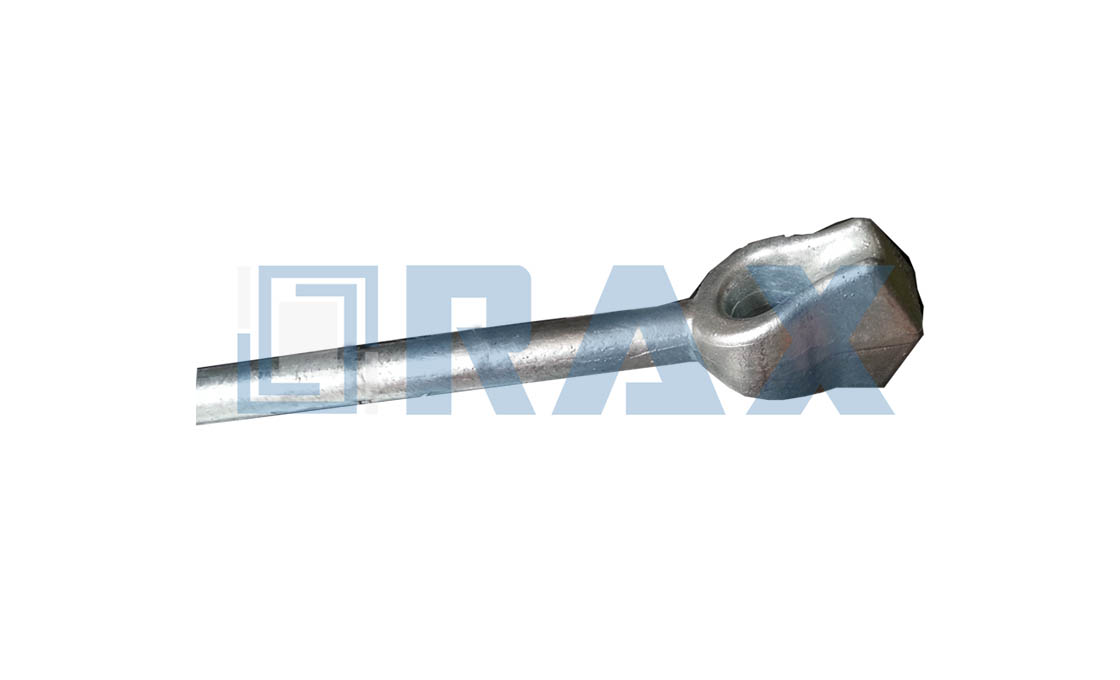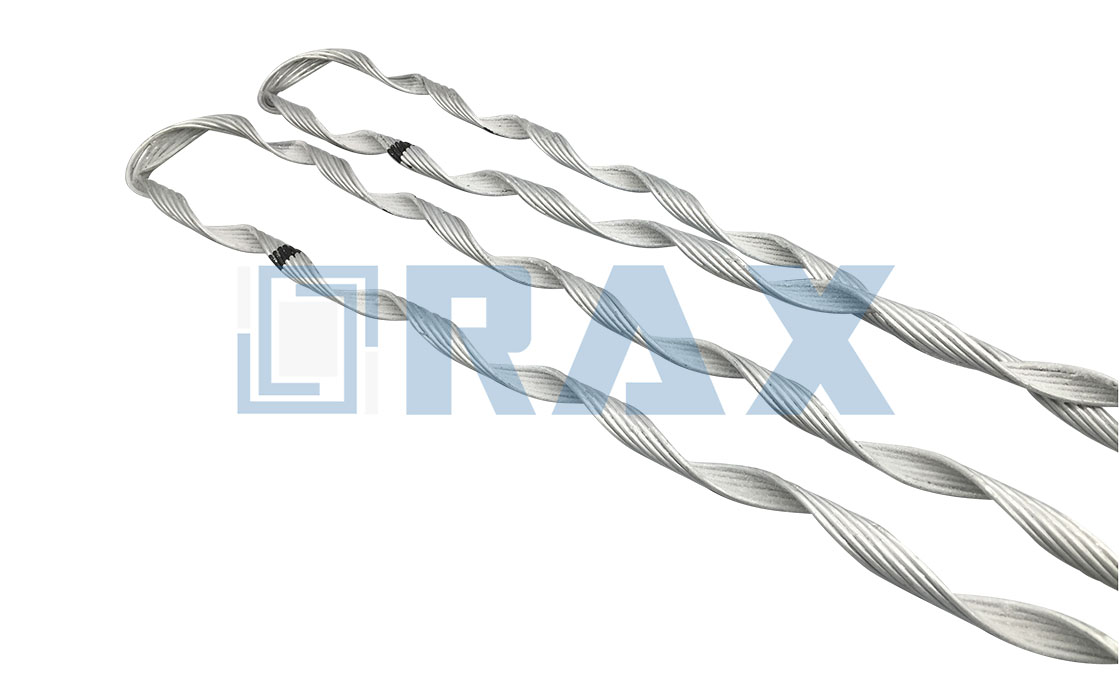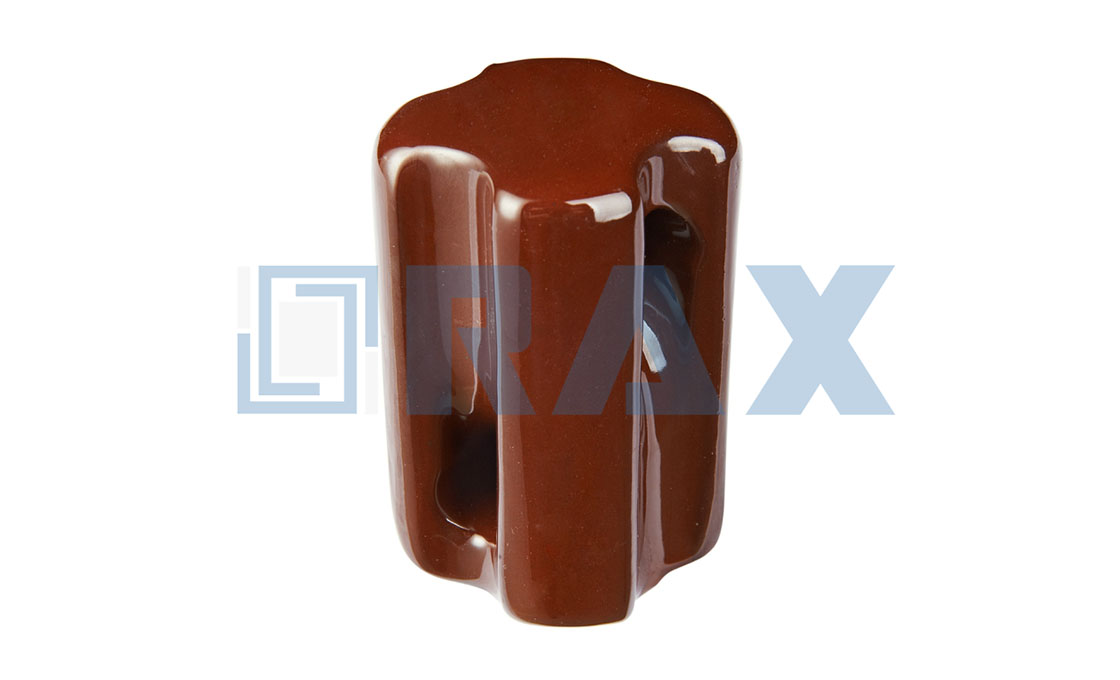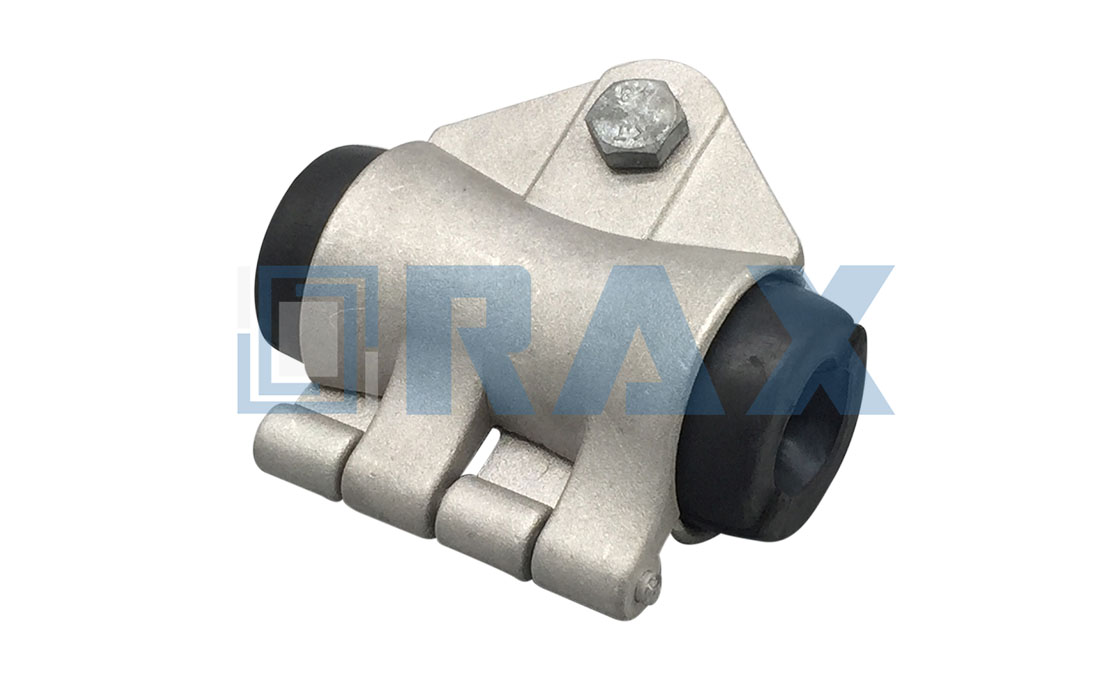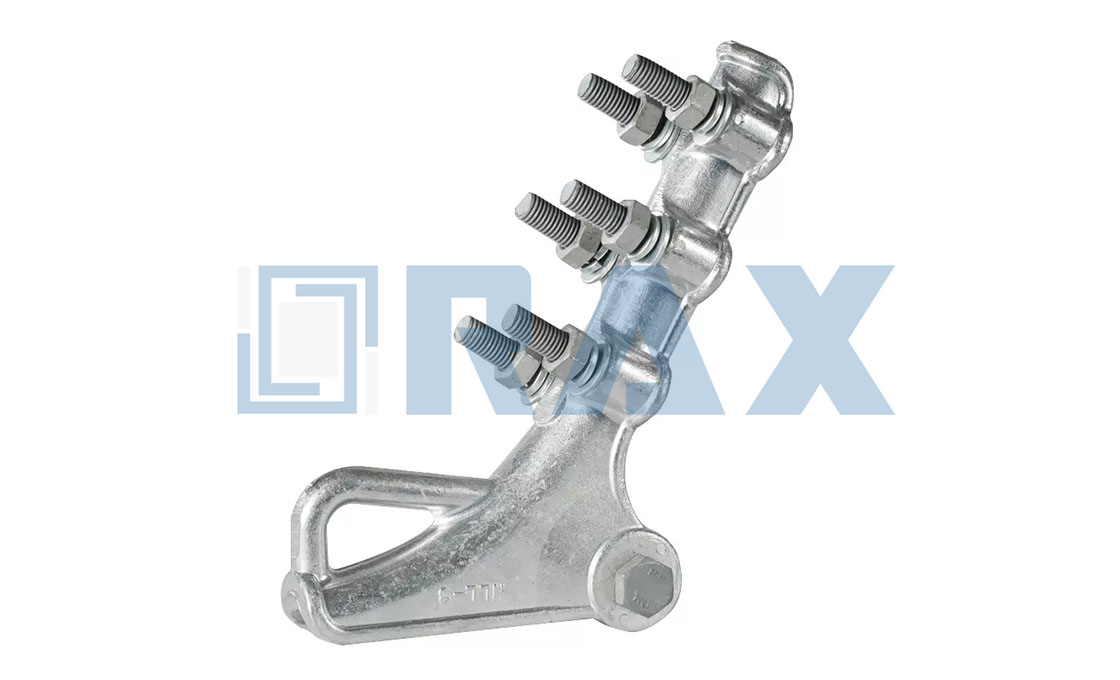Transmission Line Hardware
Transmission line hardware is also called transmission line fitting or transmission line accessory.
Transmission line hardware is a general called for all the fittings that used to connect the transmission line. They can survive in the heavy saline conditions along the coast.
Transmission line hardware is designed to use on the transformer substation or terminal transmission pole.
Rax Industry transmission line accessories are free from defects that would cause the transmission line doesn’t work well. They have the features of resistance to atmospheric corrosion, both during storage and in service.
Transmission line hardware includes Guy grip, silicon insulator, stay insulator, tension clamp, suspension clamp, ball socket, fuse link, and so on.
Rax Industry ball socket with minimum failing load 70kn is made from malleable cast iron. It is used with accessories of security clips to stop the ball eye from dropping off.
Ball socket tolerance according to BS3288. The ball socket size is according to the drawing.
Rax Industry tension clamp is also called pistol clamp which is connected with the ball socket.
The minimum failing load is indelibly marked on each pistol clamp. According to the conductor size, there are different types of tension clamps.
Rax Industry PG clamp is made from aluminum suit for different sizes of conductor cross-section.
Rax Industry dead-end guy grip 100mm2 steel for 7/2.6 mm2 stay wire is the hottest sale. The dead-end guy grip with the helical loop is made from galvanized steel wire. The total length is 1420mm for dead-end guy grip 100mm2 the Minimum ultimate tensile breaking strength is more than 35kn.
As a transmission line hardware manufacturer, Rax Industry produces the transmission line hardware according to BS3288. And All ferrous metal fittings except these of stainless steel are protected by hot-dip galvanizing according to BS729. Rax Industry welcomes customers to inspect the manufacturing facility and quality management system. The overhead transmission line accessories’ test report is available for approval before shipment.
What are you waiting for? Contact us at [email protected].
Transmission Line Hardware Guide
- Chapter 1: Transmission Line Hardware
- Chapter 2: Which Transmission Line Hardware Should I Buy?
- Chapter 3: The Cost of Transmission Line Hardware
- Chapter 4: Essential Features of Transmission Line Hardware
- Chapter 5: Where Can I Find the Best Transmission Line Hardware?
- Chapter 6: Choosing the Best Transmission Line Hardware Manufacturer
- Chapter 7: Conclusion
Transmission Line Hardware
Transmission lines play a critical role in the transmission and distribution of electricity.
They are mainly used where electricity needs to be transmitted over a long distance.
While the basic components of an electricity transmission system are poles, insulators and conductors, there are other components that are barely talked about.
You need to pay attention to the electrical transmission line hardware fittings.
Even if all the basic components are in place, they will be of less importance if there are no transmission line fittings.
The fittings or the accessories ensure that the major components are in proper positions where they can function effectively.
They ensure that electricity is transmitted without any interruption.
Which Transmission Line Hardware Should I Buy?
Let’s say you are in the process of setting up transmission lines.
All you know is that you need to buy the overhead transmission line accessories and hardware.
However, you are not sure about the specific transmission line accessories that you should buy.
Don’t worry. Here is a breakdown of the overhead fittings that should be available on any power line:
1.Suspension Transmission Line Clamp
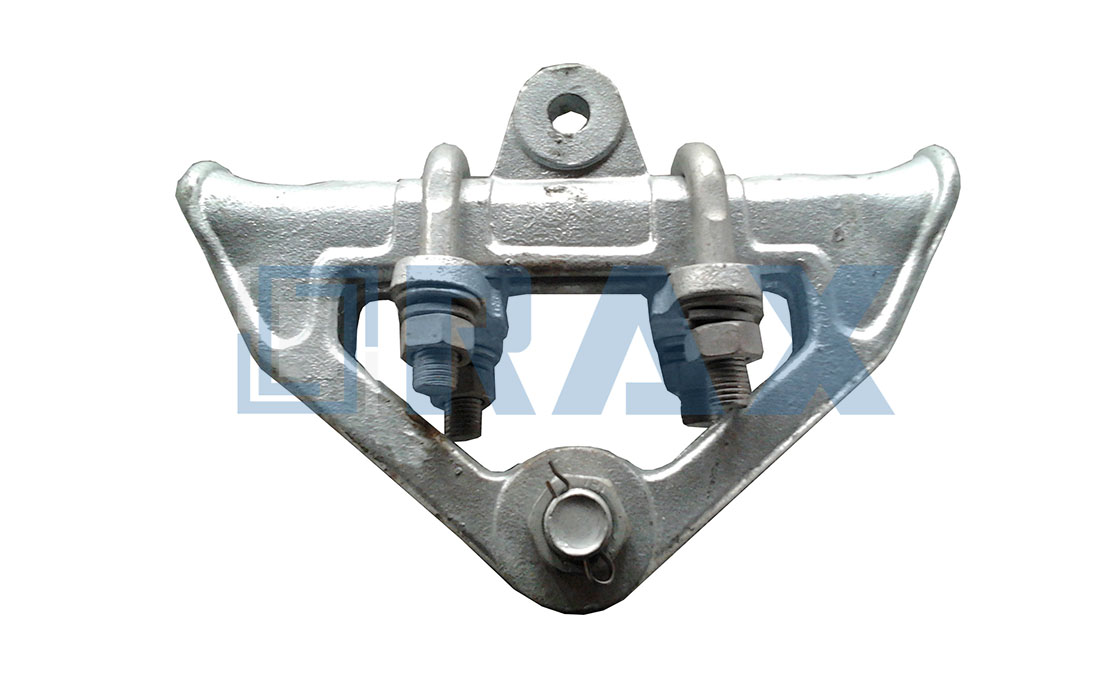
Suspension Clamps
The primary role of suspension transmission line clamps is to hang conductors to the insulators.
The clamps also create a linkage between other accessories and the tower arms.
Suspension clamps are made of aluminum and come in different sizes depending on what you want.
2.Strain Transmission Line Clamp
As transmission hardware, strain transmission line clamps are mainly used to fix conductors to the insulators.
They can also fix other transmission line hardware to the substation structures and tower arms.
Strain clamps are divided into two.
You can buy a detachable strain clamp or a non-detachable strain clamp.
Detachable strain clamps will allow you to make some adjustments to the length of the conductor.
With non-detachable clamps, you can’t adjust the conductor length.
Instead, you should buy a clamp that will match the length of the conductor.
3.Link Fittings
Now that we have clamps, how do you think they get attached to the insulators?
This is achieved with the help of link fittings.
Link fittings are made of steel which creates a strong attachment with other components.
3. Top Tie
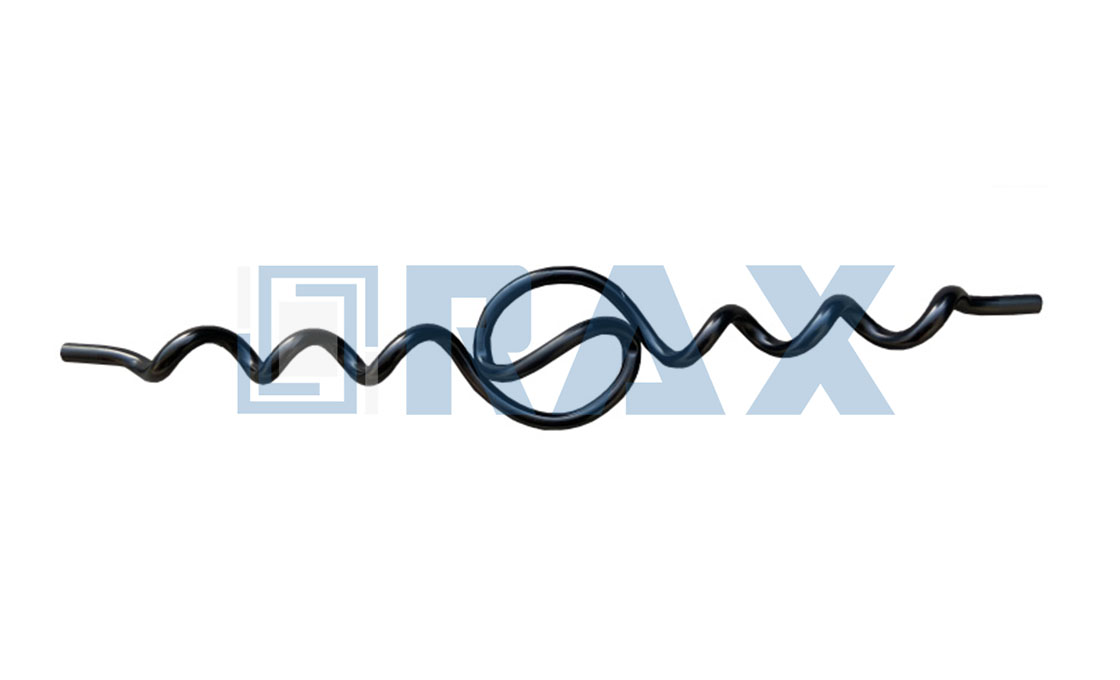
Top Tie
This is another vital transmission line fitting that you should buy.
It is designed to hold more than one conductor to the top curve of the insulator.
Aluminum clad steel is the main material that is used for making top ties.
To ensure that the conductors are well-bundled, top ties consist of neck tube label and guy grip.
4. Davit Arm
A davit arm of a transmission line is an accessory that supports the conductor onto the pole.
It is characterized by a long body that is designed to support the conductor at the very end just next to the pole.
The davit arm which has a self-supporting body is then fixed to the associating pole.
Davit arms are built for strength. They can comfortably support the length of the conductor.
You can buy ready-made davit arms or you can order for custom davit arms from the transmission line hardware manufacturer.
5. Wood pole staples
In any transmission line, the conductor or cables will always end up on the poles for support.
Wood pole staples are used to keep the conductor safe on the pole.
To be precise, they hold the grounding and the bonding wires onto the pole.
The staples have a fishhook design which helps them to restrict the movements of the cables.
They are also insulated to prevent any incidences of currents from flowing across them.
If you live in an area that is prone to insecurities, a pole staple can help you to secure the grounding cables.
They are difficult to remove using common tools.
6. Ball Clevis for transmission line
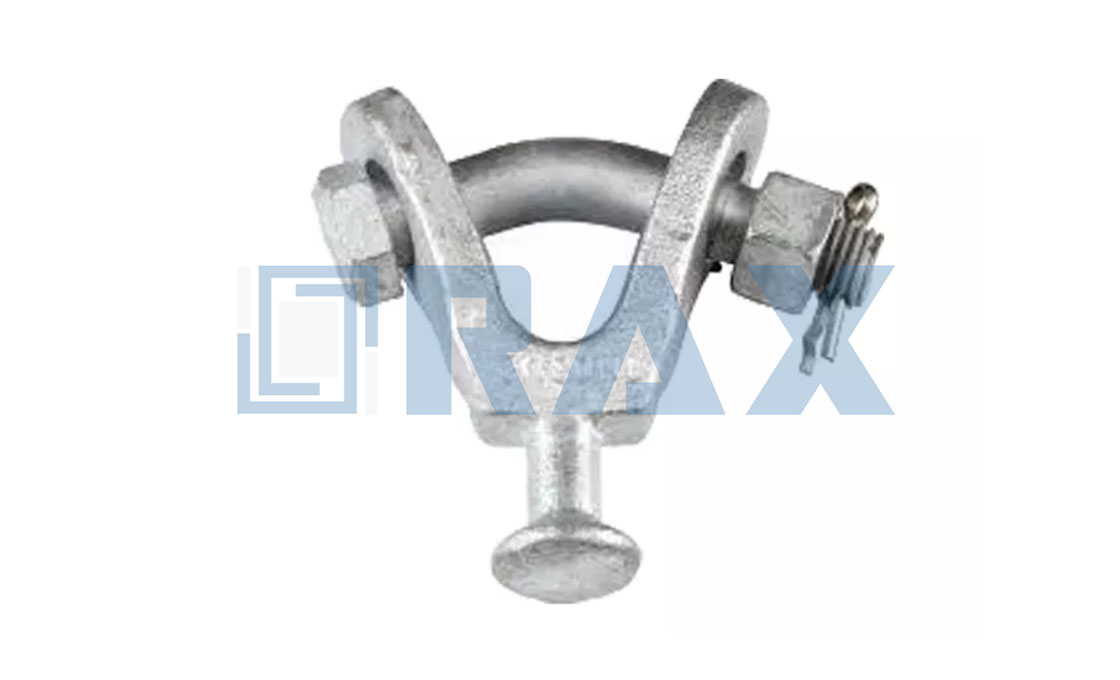
ball clevis
A ball clevis is important hardware for a transmission line that you should buy.
It is usually regarded as stringing equipment because it provides a mini-platform on which one part of the insulator or conductor can be fastened to.
A ball clevis of a transmission line is galvanized to ensure that it lasts even when the environmental conditions prove to be tough.
7. Anchor rod for transmission line
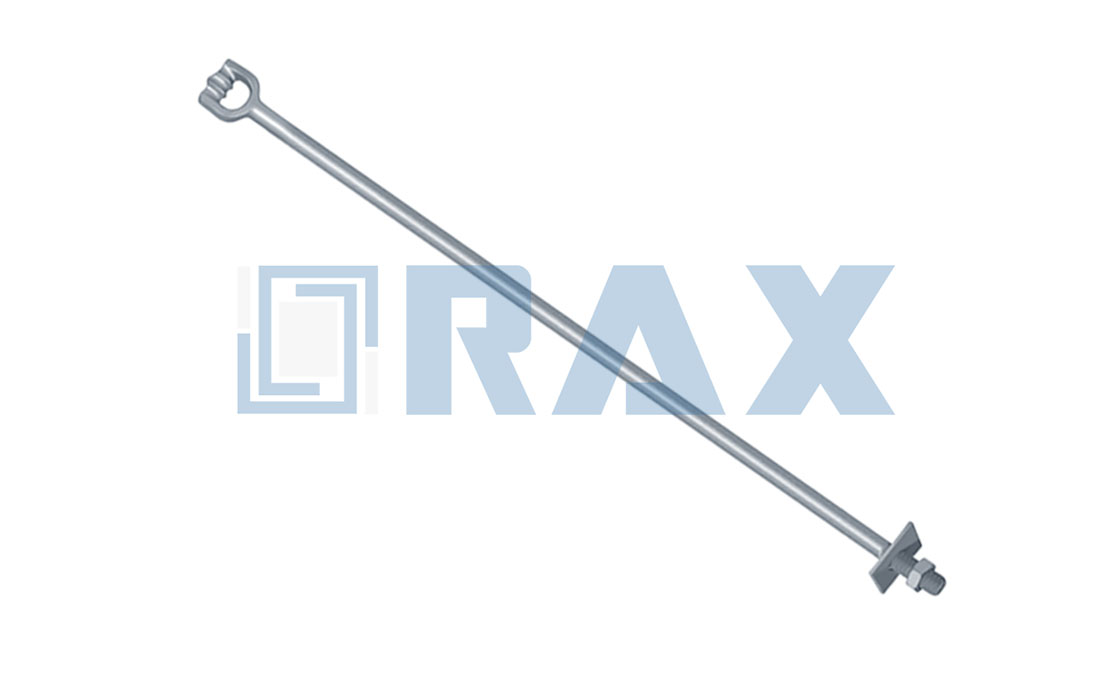 Anchor Rod
Anchor Rod
Also known as the thimble rod, it is used to keep the transmission line steady.
Its outstanding features are the oval eyes coupled with a wire strand thimble.
Anchor rods are made of strong material and properly treated to make them withstand harsh conditions.
8. Guy thimble for transmission line
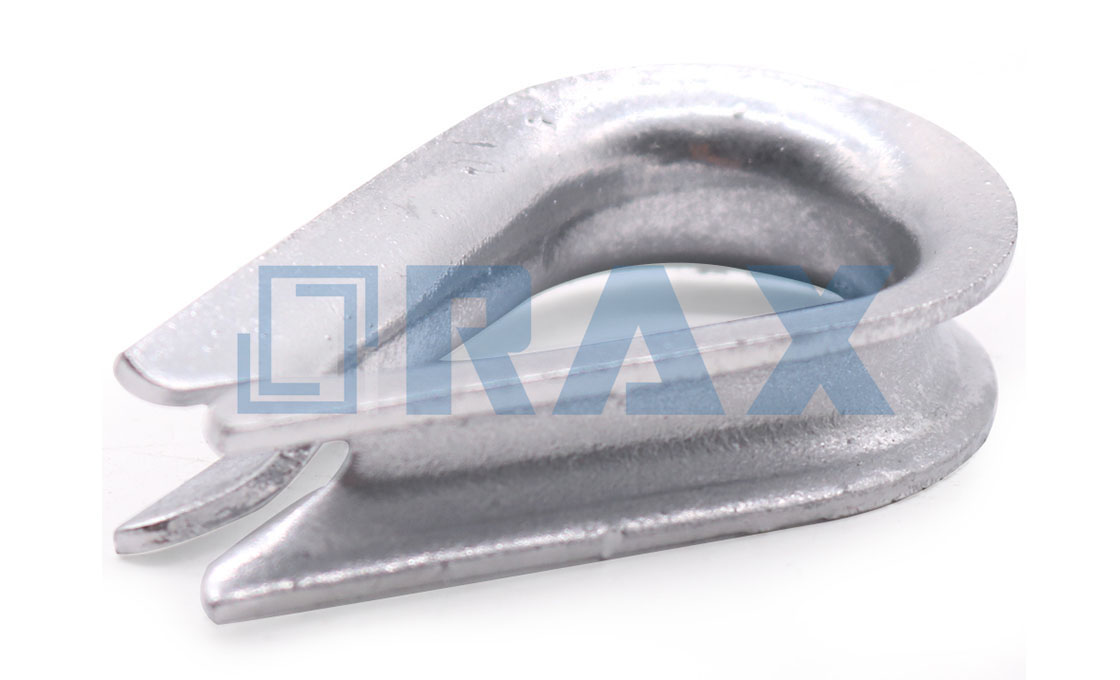 guy thimble
guy thimble
A guy thimble acts as an interface between the tension clamp and the conductor.
Basically, it is used to connect the tension clamp to the conductor.
9. Pole top bracket for transmission line
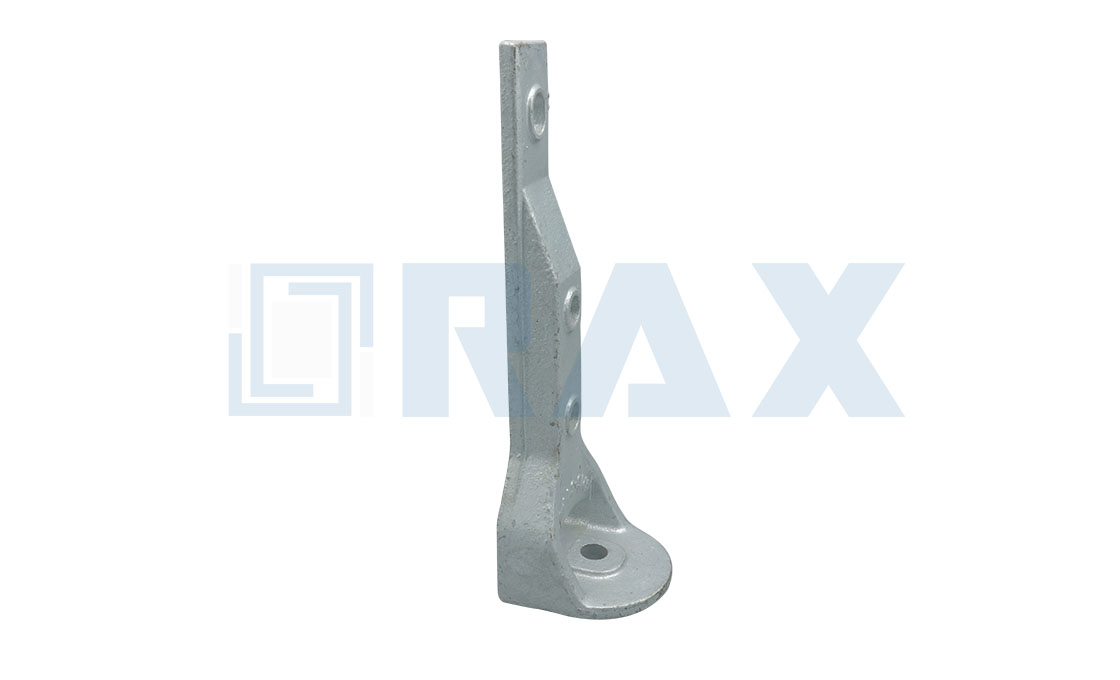 pole top bracket
pole top bracket
This hardware for the transmission line is usually installed against the flat pole gains.
Its material consists of hot-dip galvanized iron which makes it tough and durable.
A pole top bracket is specially designed to rest at the top of the insulator brackets.
Should I buy all of the above electrical transmission line hardware fittings?
To ensure that the transmission lines perform their duty effectively without any hindrance, consider buying all the necessary fittings.
Do a deep analysis of the structure and the nature of your transmission line before choosing the exact fitting that you want.
Since overhead transmission line accessories come in different dimensions, you will also be able to choose a fitting that will fit your power line.
Once you are done with your analysis, you can contact the transmission line manufacturer and place your order.
The Cost of Transmission Line Hardware
What is the average price of the transmission line hardware?
Truth be told, there is no definite answer to this question.
This is because there is a wide variety of transmission line hardware that you can buy.
Each hardware is unique on its own.
So, the cost can vary from one hardware to another.
Even if the fittings are the same, there could be a variation in terms of the cost.
For instance, two tension clamps for the transmission line can have different price tags.
The price difference could be a result of the specifications of the hardware.
So, how can I get to know the exact price of transmission line fittings?
It is quite simple.
Contact the transmission line hardware manufacturers for the quotation.
They will give you the prices and specifications of each fitting that you are planning to buy.
They can go to the extent of helping you to choose the fittings that will suit your transmission lines.
Essential Features of Transmission Line Hardware
Before you buy transmission line hardware, there are certain things that you should look out for.
One of them is the attributes or properties of the hardware.
Attributes are things that define the quality of any transmission line fitting.
Will the fitting last long?
Will it be able to perform its mandate efficiently?
How will it work with other components of the transmission line?
Here are some of the core properties that you should pay attention to when buying transmission line hardware:
1. The material of the transmission line hardware
What type of material has been used to make the transmission line hardware?
You need to be careful with the material as it will determine whether the hardware will last for long or not.
Ensure that the hardware is made of string materials.
The most preferred materials for the fittings are aluminum and steel.
If it is made of iron, ensure that it is galvanized.
The material should be resistant to stress and inter-crystalline corrosion.
Apart from their strength, these materials can withstand harsh weather conditions.
They won’t rust or corrode easily when exposed to harsh conditions.
Even if the material is good, you should check its thickness. It should be sufficient enough to withstand the physical and environmental forces.
Obviously, you don’t want to keep replacing your fittings every now and then bearing in mind that the replacement process can be quite hectic.
2. The design of the transmission line hardware
With the design, we simply mean the physical and structural organization of the fitting.
But, why should I pay attention to the design property of the hardware?
The design will determine how the hardware will relate to other components and accessories of the transmission line.
This is because some components are designed to work with fittings that meet certain design requirements.
One aspect of the design that you need to focus on is the measurement or dimensions of the hardware.
Do the measurements of the hardware match with those of the transmission line?
It will be a waste of money if you buy fittings whose dimensions don’t match with those of the transmission line.
Shape and angle of inclination are other design aspects that you should pay special attention to.
3. Mechanical properties of the transmission line hardware
You should check the mechanical features of the hardware before making that critical purchasing decision.
Mechanical properties affect the way the fittings will work.
One of the main mechanical properties that you should look at is deformation.
What is the maximum deformation load that the hardware can withstand?
For the moving accessories, try to know their turning angle.
Where Can I Find the Best Transmission Line hardware?
Where you buy the transmission line hardware matters.
Buying from a reputable buyer increases your chances of getting high-quality fittings.
The reverse is true when you buy from a corny manufacturer or supplier.
So, where can I find reliable transmission line material suppliers?
The following are the fastest ways of locating such a manufacturer:
-Recommendations: Suggestions from people close to you can lead you to reliable transmission line hardware manufacturers in China.
The good thing is they will only recommend the best fittings companies.
-Business Directories: Business directories are like libraries of businesses. You can get any company that you are looking for.
Utilize both online and offline business listings to find the best transmission line fittings and suppliers.
-Search Engine: Just type “transmission line hardware manufacturers in China” and analyze the results.
You will definitely see quite a good number of manufacturers and suppliers of transmission line fittings.
Choosing the Best Transmission Line Hardware Manufacturer
Let’s say you have compiled a list of several transmission line hardware fittings manufacturers.
Now you have to separate them so that you end up with the best manufacturer.
What are some of the things that you should do?
Here are the guidelines that can help you to end up with the best transmission line hardware manufacturer:
-Check whether the company is licensed
Do you know that there are ghost manufacturers of transmission line hardware?
These are entities that claim to be manufacturing the fittings yet they don’t.
One way of confirming that the manufacturer actually exists is by asking for their license.
This will prove that they are actually a genuine company.
You can also inquire if the company has other relevant certifications that are required in this industry.
-The production capacity of the company
Is the company really capable of manufacturing premium transmission line accessories?
The only way of ascertaining this is by inquiring about their production capacity.
Do they have an expansive factory, manpower, and advanced technology?
If you have the means, you can travel to the manufacturer’s premises to see for yourself.
-Look for the reviews about the transmission line hardware manufacturer
This is one of the best methods that you can use to know whether you should trust the manufacturer.
Lots of positive reviews are a sign that the manufacturer can be trusted.
But, where can I find reviews about a manufacturer?
Social media platforms are just one of the avenues.
-Experience of the manufacturer
How many years has the manufacturer been in operation
It is always advisable to go for well-established companies. They have served different clients and they know what it takes to meet the expectations of their clients.
While we cannot rule out the capabilities of new players, you will be much safer with the experienced ones.
Conclusion
So, are you ready to buy the best transmission line hardware?
This guide will be valuable to you. It will help you to find what you are looking for.
Once you find the best transmission line hardware manufacturer in China, everything will proceed smoothly.
If you are unsure about anything, don’t hesitate to talk with the manufacturer for further guidance.
Learn More:
FAQ
What are transmission line hardware?
Transmission line hardware plays a critical role in transformer substation or terminal transmission pole, they are a general term for all the fittings which support the transmission line.
They are also called transmission line hardware, transmission line accessories, or transmission line hardware fittings.
What are the types of transmission line hardware?
According to the function, the transmission line hardware can be divided into several types:
- Suspension Transmission Line Clamp
- Strain Transmission Line Clamp
- Link Fittings
- Top Tie
- Davit Arm
- Wood pole staples
- Ball Clevis for transmission line
- Anchor rod for transmission line
- Guy thimble for transmission line
- Pole top bracket for transmission line
What are the Essential Features of Transmission Line Hardware?
When choosing transmission line hardware, there are certain things that you should look out for:
- The material of the transmission line hardware
- The design of the transmission line hardware
- Mechanical properties of the transmission line hardware
How to choosing the best transmission line hardware manufacturer?
Here are the guidelines that can help you to end up with a suitable manufacturer:
- Check whether the company is licensed
- The production capacity of the company
- Look for the reviews about the transmission line hardware manufacturer
- Experience of the manufacturer
